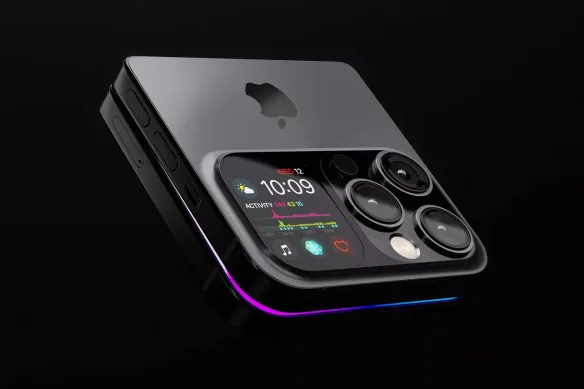The Evolution of the iPhone: The iPhone 17 Air: How Apple Prepares for the Foldable Future Apple is famous for its very strict policy regarding innovations, and the future 17 Air is not an exception. The 17 Air is a bridge to foldable devices, and Apple is willing to push the boundaries of thinness and component packaging in order to bring out the foldable iPhones.
A Revolutionary Design Choice
Gossip has it that the iPhone 17 Air will be as thin as 5mm to 6mm, thereby being the slimmest iPhone to be ever produced. To this end, Apple is said to be focusing on using lighter materials and better packaging of components on the inside. As compared to the Pro models, the Air will feature a single rear camera at the center, and a slimmer battery, which may have an impact on the battery back up.
Apple’s decision to integrate its own proprietary 5G modem that lacks mmWave support and the lack of a physical SIM card are a result of Apple’s efforts to make the phone as light and thin as possible. Although people may hear those compromises as disadvantages, they are necessary for Apple to be ready for the foldable tech, in which compactness and power-saving matters.
Migration from Titanium to Aluminum
Closely related to the change in Apple’s design strategies is the switch of material from titanium to aluminum for the iPhone 17 Pro and Pro Max. While titanium is stronger and gives better looks, aluminum is a cheaper and lighter option. Also, aluminum is easier to machine, and wireless charging is compatible with the company’s objectives in the next generation of products.
Aluminum for the Pro models and incorporating it into the iPhone 17 Air is a clear switch in a strategy. Apple seems to be perfecting its approach to folding hardware, where weight and material choices matter most.
This is the Roadmap to Foldable iPhones
This is a clear departure from the strategies adopted by other players such as Samsung who are all out commanding the foldable technology. As foldable phones like the Honor Magic V3 and Samsung Galaxy Z Fold SE are getting thinner, Apple’s goal is to create a foldable phone that it considers perfect.
The thin form factor of the iPhone 17 Air is the precursor to the technologies that will be needed in a foldable iPhone. As for the specific components, thin-battery, Face ID module, and minimalist PCB will likely pass on to future folding models.
For example, a flip iPhone as a clamshell style like the recently released Galaxy Z Flip requires a new kind of hinge that can last for quite some time due to folds. These are the technologies and manufacturing processes that will be defined through the iPhone 17 Air.
The Market Implications
Many consumers are intrigued by the foldable phones, but Flip-type devices have been selling more than Fold-types because of their relatively cheaper prices and small size. This segment could get disrupted the way the iPhone disrupted the smartphone segment if Apple decides to enter it
However, Apple does not only aim at the outlook and the fashion of the devices. A supply chain and the manufacturing capacity need to be developed to meet foldable devices demand, which should be higher than in the case of key players such as Samsung. With 17 Air, Apple is not only developing new technological features but also bringing its providers to face the future of foldable phones.

What Lies Ahead
The design of the iPhone 17 Air represents the baby steps of Apple in the technological evolution of the iPhone. First, focusing on slim down components and applying them to a typical smartphone, Apple is guaranteeing a smooth evolution toward foldable phones.
Also, the Effectiveness of Apple on the market can not be neglected in any way. The launch of a foldable iPhone would shift foldable phones to the mainstream, therefore forcing rivals to move faster.
According to rumors, the 17 Air will be a transitional model between the current philosophy of the iPhone and the future foldable iPhones. Being a device with an incredibly thin profile and understated design, it embodies what Apple wants the future of mobile computing to be.
In conclusion, the iPhone 17 Air isn’t just the company’s new model in the iPhone model range, but the first glimpse at Apple’s foldable future. The company is now ready to revolutionize the market for smartphones with a new design, elements of the use of non-traditional materials, and component thickness.
Source :: bgr.com



